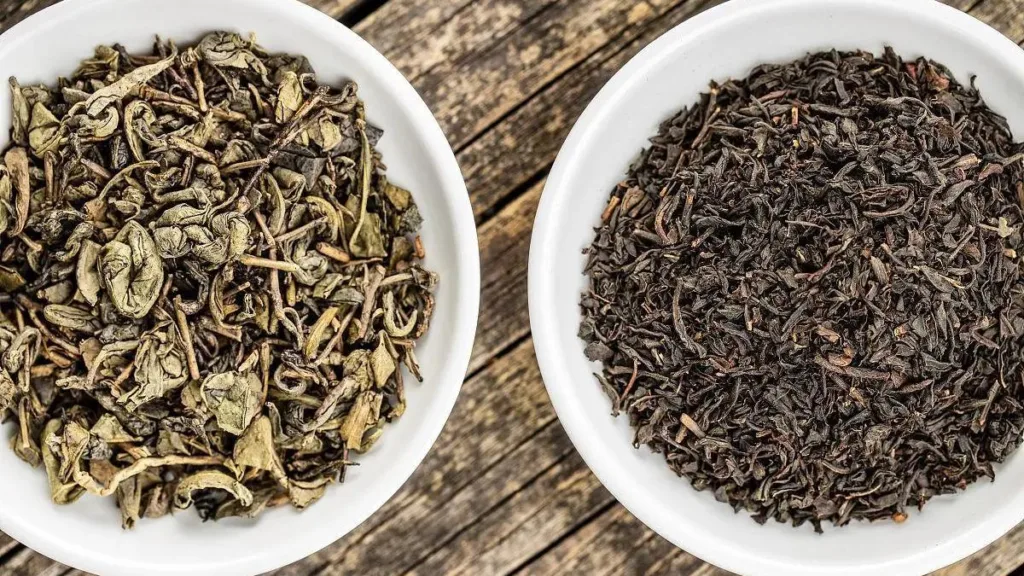In a word, yes. The chemical composition of tea leaves not only determines the quality of the tea but also has a close relationship with some of the pharmacological effects associated with tea consumption. Fresh tea leaves contain a wide range of chemical compounds, primarily including catechins, caffeine, essential oils, water, minerals, pigments, carbohydrates, proteins, amino acids, lipids, vitamins, and more. These components exhibit noticeable variations based on factors such as tea plant variety, natural growth environment, tea garden management, and harvesting conditions. Among these components, catechins, caffeine, and essential oils are particularly closely linked to the quality of tea leaves and the health benefits of tea consumption.
- Caffeine: Caffeine is a biologically significant alkaloid found in tea leaves, typically comprising 2-5% of the total content. A typical 150 ml cup of tea contains around 40 milligrams of caffeine. Caffeine is a central nervous system stimulant, known for its stimulating and endurance-enhancing effects. Due to its often complex formation with catechins in tea leaves, the physiological effects of caffeine in tea can differ from free caffeine. In a comprehensive assessment of caffeine safety, the conclusion was that, at normal consumption levels, caffeine in tea does not have teratogenic, carcinogenic, or mutagenic effects on humans.
- Polyphenolic Compounds (Catechins): Soluble polyphenolic compounds in tea are mainly composed of catechins, flavonoids, anthocyanins, and phenolic acids, with catechins representing the majority and accounting for approximately 70% of the total polyphenols in tea. The main catechins in tea are epicatechin (EC), epicatechin gallate (EGC), epigallocatechin (EGC), and epigallocatechin gallate (EGCG). These compounds are the primary active components responsible for the therapeutic properties of tea. They have been shown to have various effects, including preventing atherosclerosis, arterial plaque formation, reducing blood lipids, anti-inflammatory and antimicrobial effects, radiation protection, anticancer, and anti-mutagenic properties.
- Vitamins: Tea leaves contain an abundance of vitamins, with vitamin B group compounds typically present at approximately 180 ppm of the dry tea weight. Nicotinic acid (Vitamin B5) is the most abundant B-vitamin in tea, accounting for about half of the B-vitamin content. It can help prevent skin conditions like pellagra. Vitamin B1 is more abundant in tea than in vegetables and supports the normal function of the nervous, cardiovascular, and digestive systems. Riboflavin (Vitamin B2) is present at about 10-20 mg per 100 grams of dry tea, and drinking 5 cups of tea a day can provide approximately 10% of the daily requirement for humans, promoting skin elasticity and maintaining retinal function. Folate (Vitamin B11) is present at approximately 10 ppm of the dry tea weight, and consuming 5 cups of tea daily can supply around 15% of the daily human requirement. It plays a role in nucleotide biosynthesis and lipid metabolism. Tea leaves have a high content of Vitamin C, with advanced green teas containing over 0.5%. Vitamin C helps prevent scurvy, boosts the body’s immune system, and promotes wound healing. The content of Vitamin E (tocopherol) in tea leaves is typically between 300 and 800 ppm of the dry tea weight, primarily found in lipid components. Vitamin E is an antioxidant that can prevent the peroxidation of lipids in the body, thus having an anti-aging effect. Vitamin K content in tea is around 300-500 international units per gram of tea, and drinking 5 cups of tea a day can meet human requirements. Vitamin K promotes the synthesis of coagulation factors in the liver.
- Mineral Elements: Tea leaves contain various mineral elements such as phosphorus, potassium, calcium, magnesium, manganese, aluminum, sulfur, and more. Most of these mineral elements are beneficial for human health. Fluoride content is particularly high in green tea, averaging around 100-200 ppm, much higher than in other plants. Fluoride effectively prevents dental caries and helps prevent osteoporosis in the elderly. The selenium content in Wulong green tea is exceptionally high, and selenium is known to have anti-cancer effects, with its deficiency leading to various endemic diseases, such as Keshan disease.
- Amino Acids: Tea leaves contain approximately 25 different amino acids, with theanine being the most abundant, accounting for more than 50% of the total amino acids. Amino acids are essential nutrients for the human body, and some amino acids are closely related to human health. For instance, glutamic acid can reduce blood ammonia levels and is used to treat hepatic coma. Cysteine can regulate fat metabolism and more.
- Other Compounds: Apart from the main components mentioned above, tea leaves also contain some minor active ingredients. Although their concentrations are low, they possess unique therapeutic effects. For example, tea polysaccharides have radiation protection properties and can increase white blood cell counts. Compounds such as aminobutyric acid, formed in tea under anaerobic conditions, have blood pressure-lowering effects.
Essential Oils: Essential oils in tea, also known as aromatic substances, comprise a complex mixture of volatile compounds, including alcohols, aldehydes, ketones, esters, phenols, nitrogen-containing compounds, carbohydrates, oxidized compounds, sulfur compounds, as well as terpenes, terpenoids, and phenolic compounds.
The content of essential oils in fresh tea leaves is minimal, with analyses showing that it is typically below 0.02%. The content of essential oils in fresh tea leaves varies depending on factors such as tea plant variety, growth environment, and growing season. For example, spring tea leaves have an essential oil content of approximately 0.014%, while summer tea leaves contain only about 0.007%. Younger tea leaves tend to have higher essential oil content, which gradually decreases as the leaves become more mature.
The essential oils in tea can originate from two sources: those generated during the growth of fresh leaves and those formed through the conversion of other substances during the manufacturing process. While the quantity of essential oils in tea is low, it plays a significant role in determining the quality of tea. The chemical composition of fresh leaves is closely related to the quality of the finished tea. The color, aroma, taste, and appearance of the finished tea are primarily driven by these factors. Therefore, the quality of the finished tea is a comprehensive reflection of various components.
In conclusion, Chinese green tea is a complex mixture of various chemical compounds that contribute to its unique flavor and potential health benefits. The key compounds, such as catechins, caffeine, vitamins, and essential oils, have been extensively studied and associated with a range of health-promoting properties. It’s important to recognize that the chemical composition of tea can vary based on factors like tea plant variety, growing conditions, and processing methods, which in turn can influence the quality and potential benefits of the final tea product.




